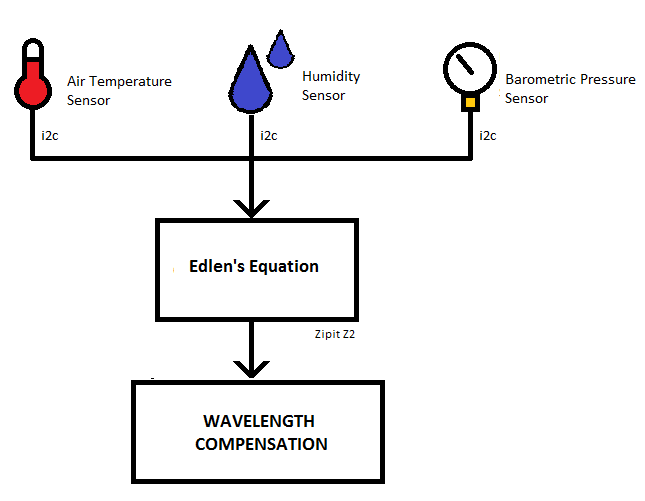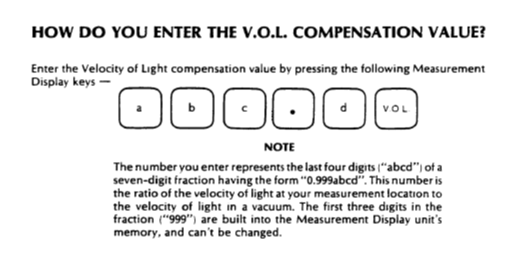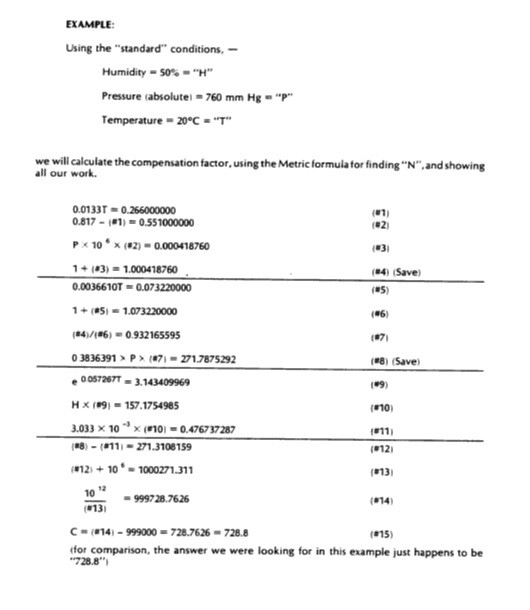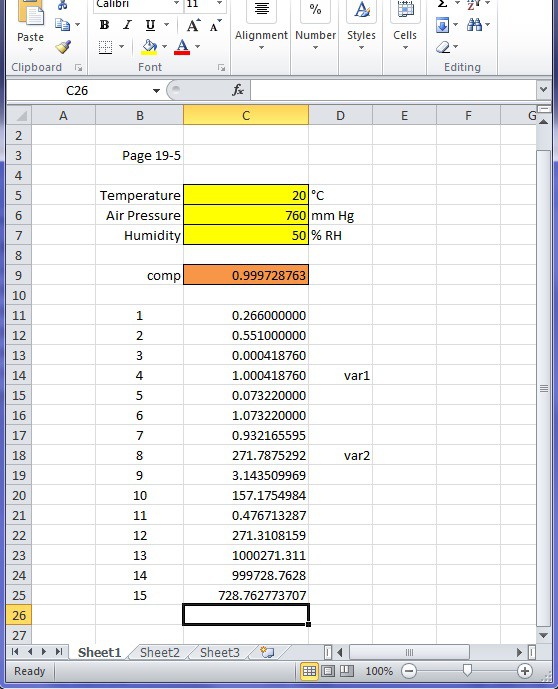this laser interferometer system uses a highly stabilized laser and precision optics to accurately measure distances. I am trying to build this so that is nearly as accurate as it’s resolution.This interferometer system is able to take measurements directly in line with the object being measured, and thus hopefully maximizing accuracy in that respect.
There are significant sources of error that will occur in this system due to operating the laser in open air.The index of refraction of air varies the path that the laser beams follow.These changes in path length result in errors in the measurement.The variation in the index of refraction can be calculated using an equation known as Edlen’s equation.
n = 1 + 7.86*10-4 *(AirPress)/(273 + temp) – 1.5*10-11* RelHumidity * (temp2 + 160)
This correction factor is implemented in the controls of the 5508A measurement display.It can be input by using the original electronic sensors whos input would be used to calculate the index of refraction of air.That correction would then be used to correct the measured value of length.

The 5508A will accept the correction a correction factor from the front panel keys or from automatic input from electronic sensors attached to a connector on the rear of the 5508A or finally from input from the GPIB port on the rear of the 5508A.

I don’t own the electronic sensors for the 5508A, so I decided to build a better set of sensors using a Zipit Z2 embedded computer running openWRT.I will use a set of sensors attached to the i2c communication connections available on the docking port of the Zipit Z2.I have written a small program to calculate the correction factor, using the barometric pressure, air temperature and relative humidity as inputs.
HP published the way that the electronics in the 5508A calculates the VOL factor. They took Edlen's equation and rederived it in a manner which is usable by the 5508A. The details of the arithmetic were given as a worked example so that people could reproduce thier work.

I took this worked example and reproduced each of the equations in a spreadsheet to verify my arithmetic.

Next I coded the arithmetic into a c language program and compiled it locally on the Zipit Z2 using a picoc compiler. The arithmetic worked out correctly :) . Now I have a compiled command line program which requires three command line parameters for temperature, humidity and barometric pressure.
Some interesting physics stuff can be seen from these equations. the equation step #14 shown in the spreadsheet and the HP screen shot shows a scale factor which can be used to show the speed of light in air. to do this take the value shown in step #14 and divide it by 1,000,000.
(1) 0.9997287628 = 999728.7628 / 1,000,000
The result is then multiplied by the speed of light in a vacuum, to give you the speed of light in air.
(2) 299,711,142.9 meters/second = 299 792 458 meters/second * 0.9997287628
The result of (2) is the speed of light in air with an air temperature of 20°C, humidity of 50% RH and barometric pressure of 650 mmHg.
This the program which performs this calculation is used in a shell script to automatically determine the correction factor and send it the the HP 5508A through its GPIB port. I'll describe the scripting later on.
 Beaglebreath
Beaglebreath
Discussions
Become a Hackaday.io Member
Create an account to leave a comment. Already have an account? Log In.